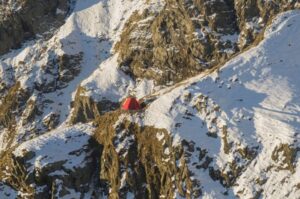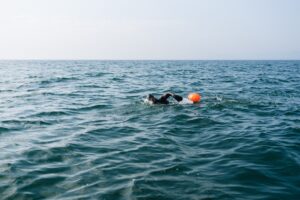It’s estimated to have taken 50 years to construct, a further 500 years to be unearthed, and more recently, seven months for Japanese tourist Jesse Katayama to reach Machu Picchu.
Peru’s most popular attraction normally lures thousands of visitors annually. This year, in March, the ancient fortress was forced into lockdown, leaving tourists unable to visit the famous Inca city indefinitely.

Jesse Katayama, left, accompanied by a park representative, earned a special exemption to visit Machu Picchu.
Undeterred by the coronavirus’s worldwide impact, Katayama decided to wait for admission to Machu Picchu before returning home. He’d left his native Japan on a global expedition to learn boxing practices from a variety of countries, before opening a boxing gym back home in Japan. One final dream before his return was to visit the UNESCO World Heritage site, which perches 2,400m above sea level in the Andes.
For Katayama, it seemed unjustified to board an “expensive” repatriation flight when he could wait out Machu Picchu’s lockdown. Unexpectedly, his wait lasted seven months, because Peru was particularly hard-hit by the coronavirus. It has lost more than 33,000 people from the disease, which gives it the single highest mortality rate per capita in the world.

Katayama put his time to good use, practicing yoga daily in nearby Aguas Calientes, completing fitness industry certificates and teaching local kids to box. He rented a small apartment until he was eventually granted an exemption to visit Machu Picchu.
Peru’s culture minister, Alejandro Neyra, allowed Katayama special access to the site in recognition of his patience. Accompanied by a park representative, he was the first person to visit Machu Picchu since March.
Katayama summed up his joy on Instagram: “After the lockdown, the first man to visit Machu Picchu is meeeeeee.”
The experience came just in time, as the 26-year-old is almost out of money and will fly home to Japan on Friday.
Machu Picchu was the epicentre of the Incan empire, serving as a royal site, and in summer, as a spiritual training ground. The Spanish invasion in the 15th century eventually wiped out the Incan civilization.
Constructed over 80,000 hectares, including terraced fields which would have once grown crops for food, Machu Picchu is one of the best-preserved ancient sites. The structures use the Incan’s trademark style of granite stones, squared precisely, without the use of mortar.

Explorer Hiram Bingham, above, was the first to unveil Machu Picchu in 1911, when he was hunting for Vilcabamba; the last capital of the Incan empire. Katayama’s own visit may not have been exploration, but the patience he showed in reaching his destination is in that spirit.






